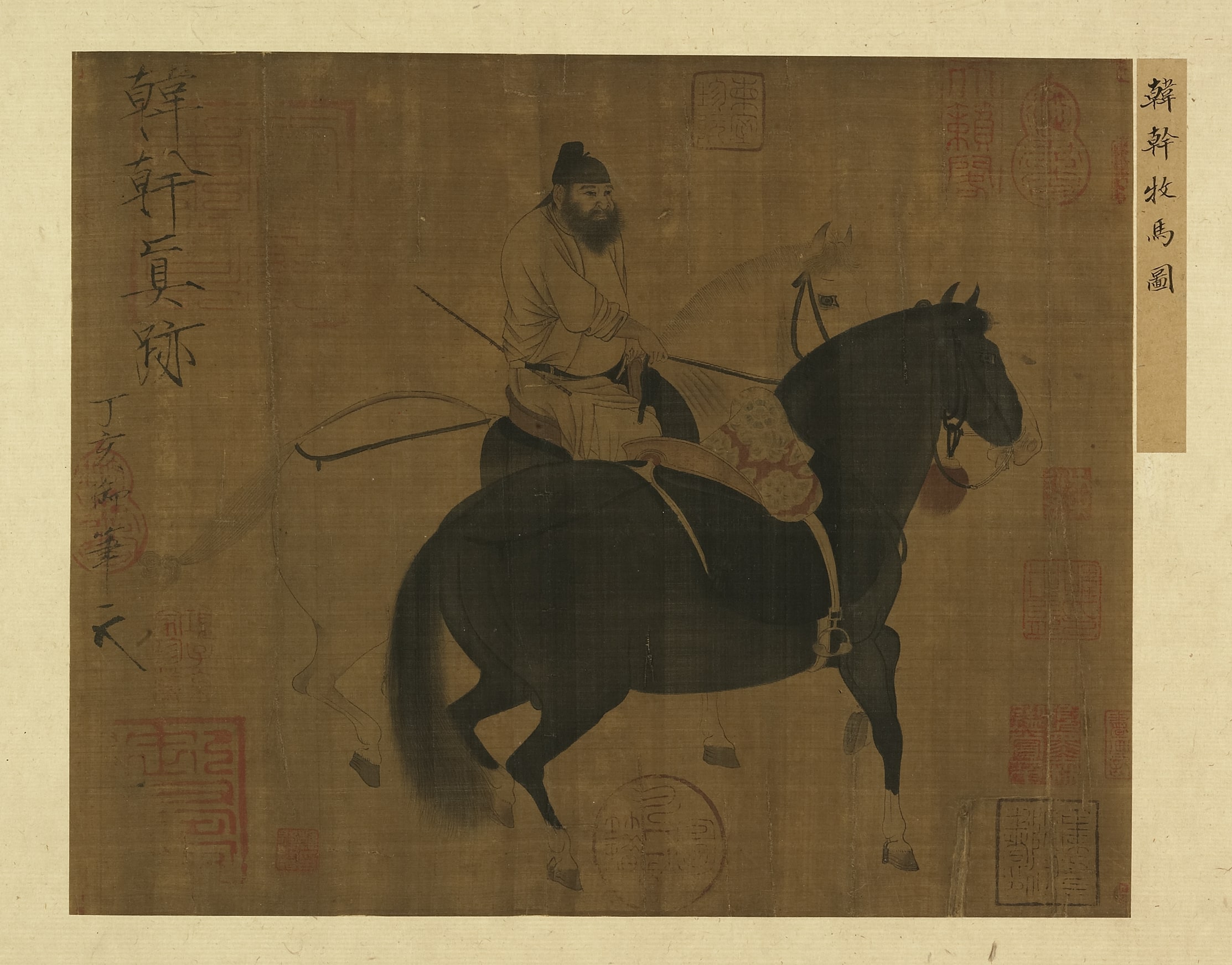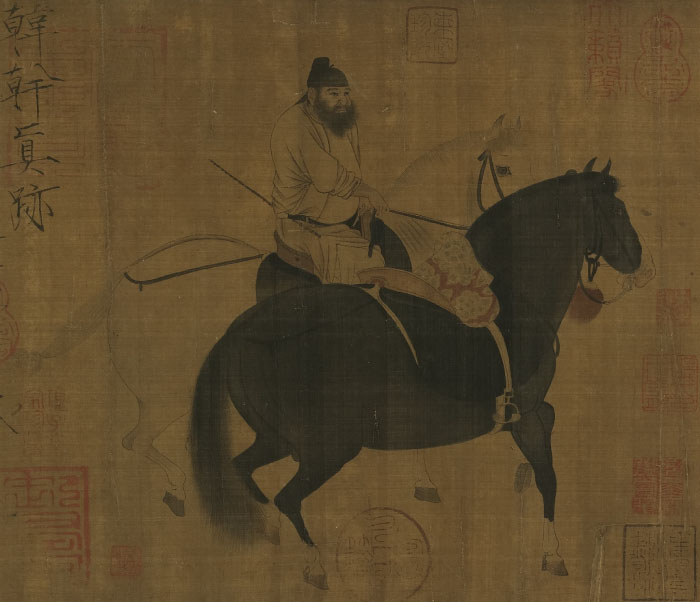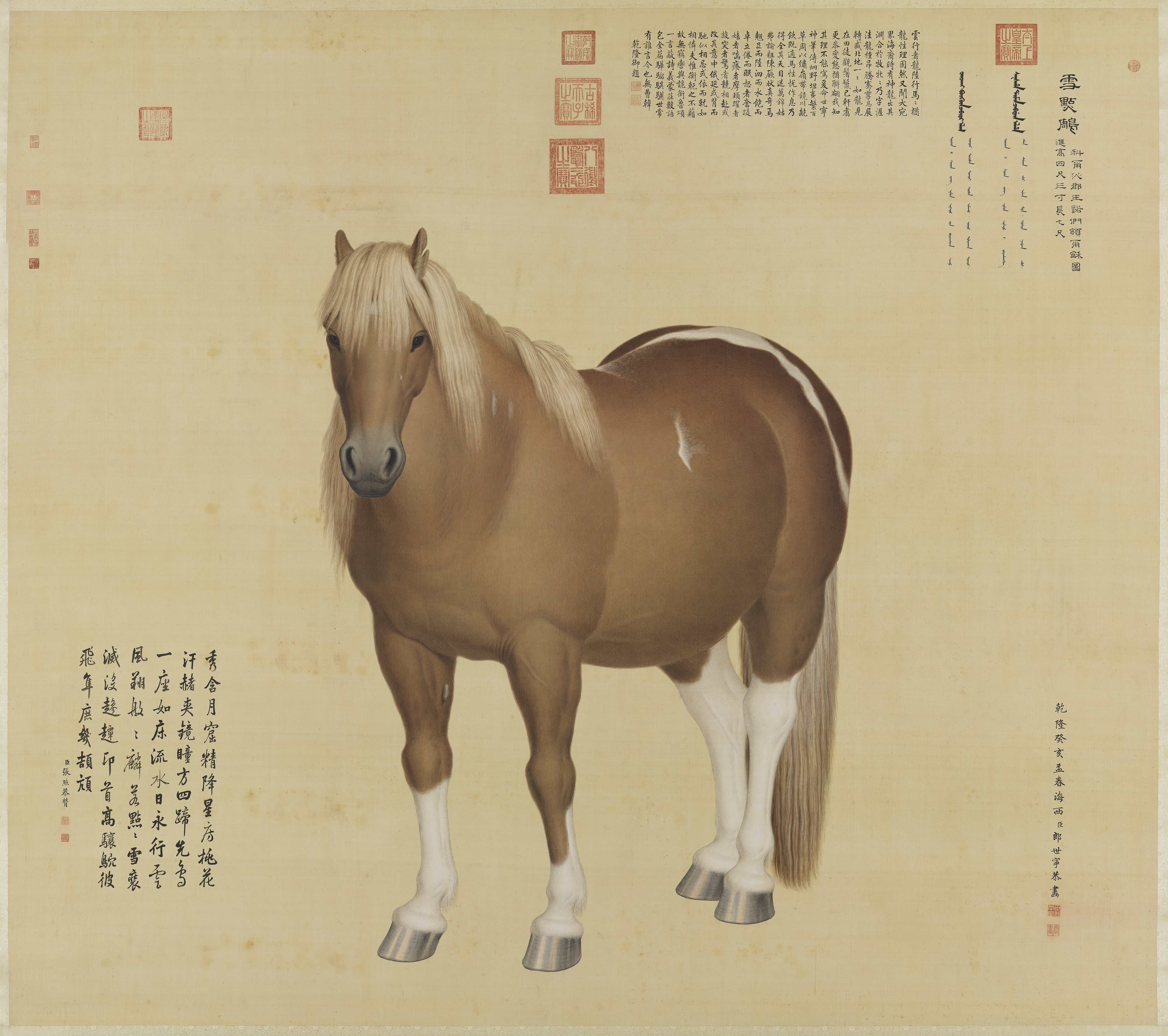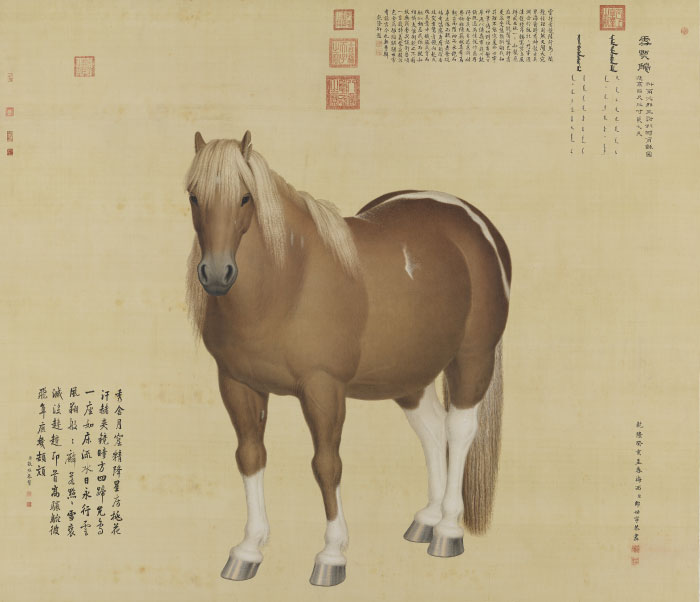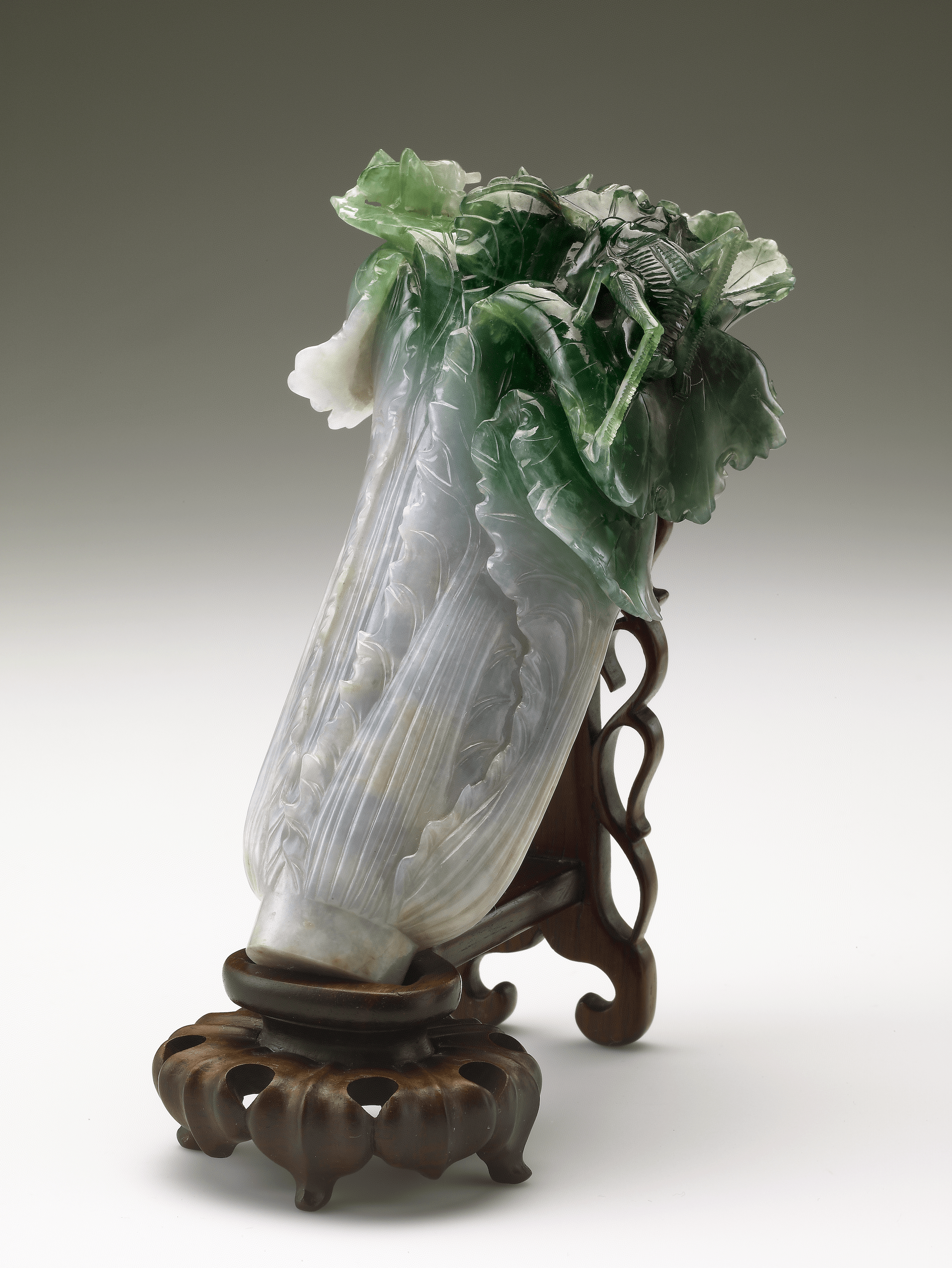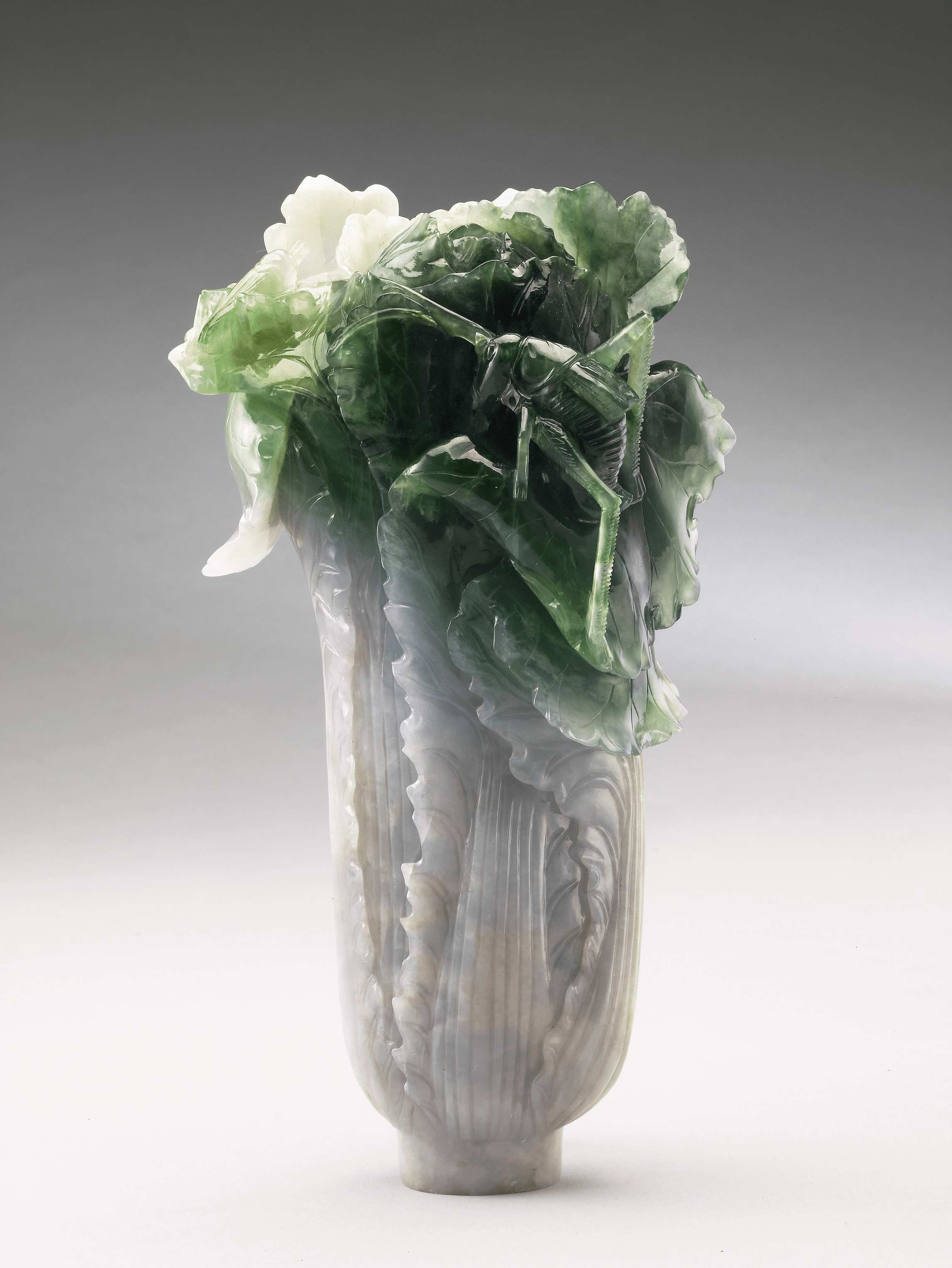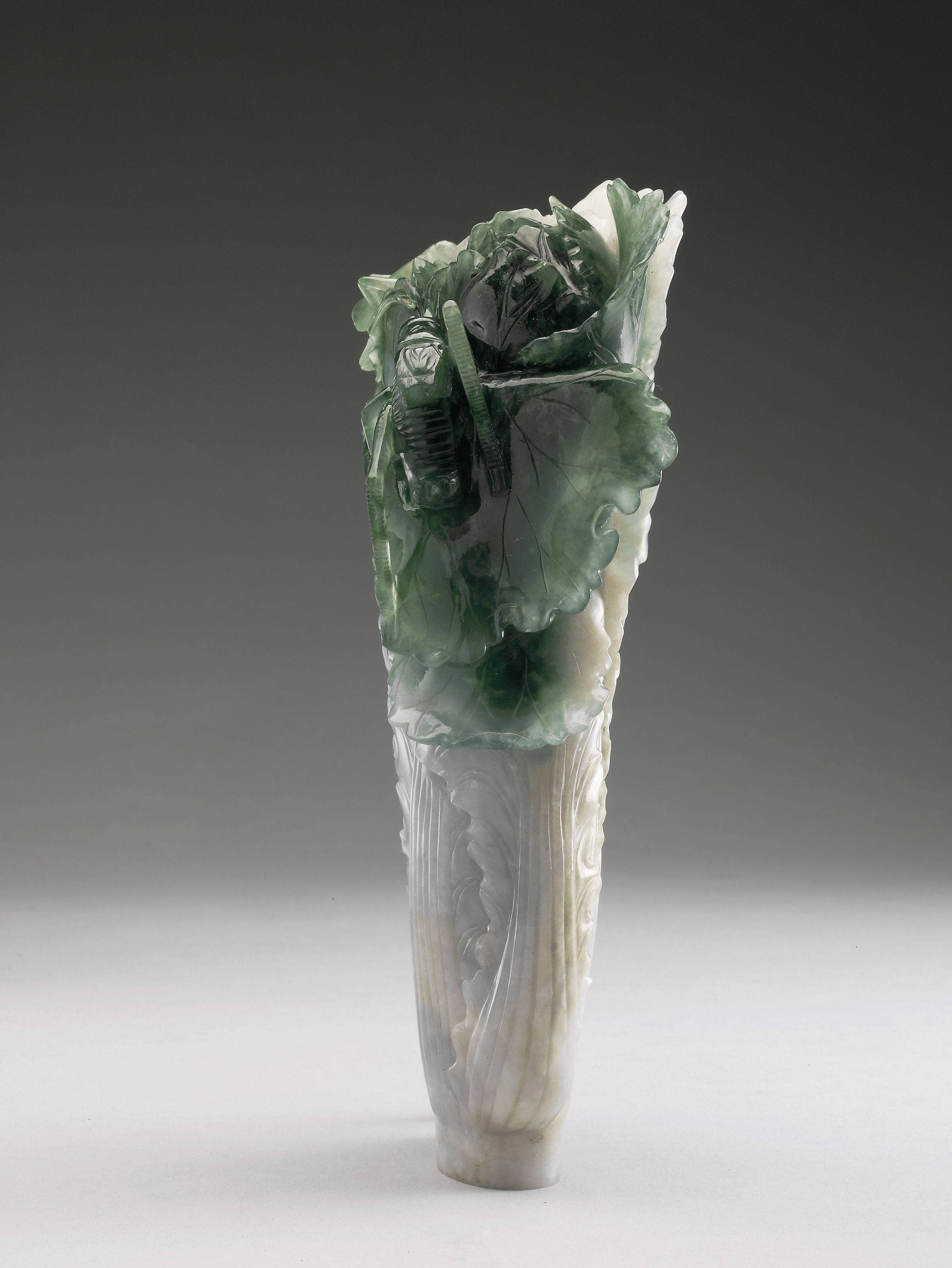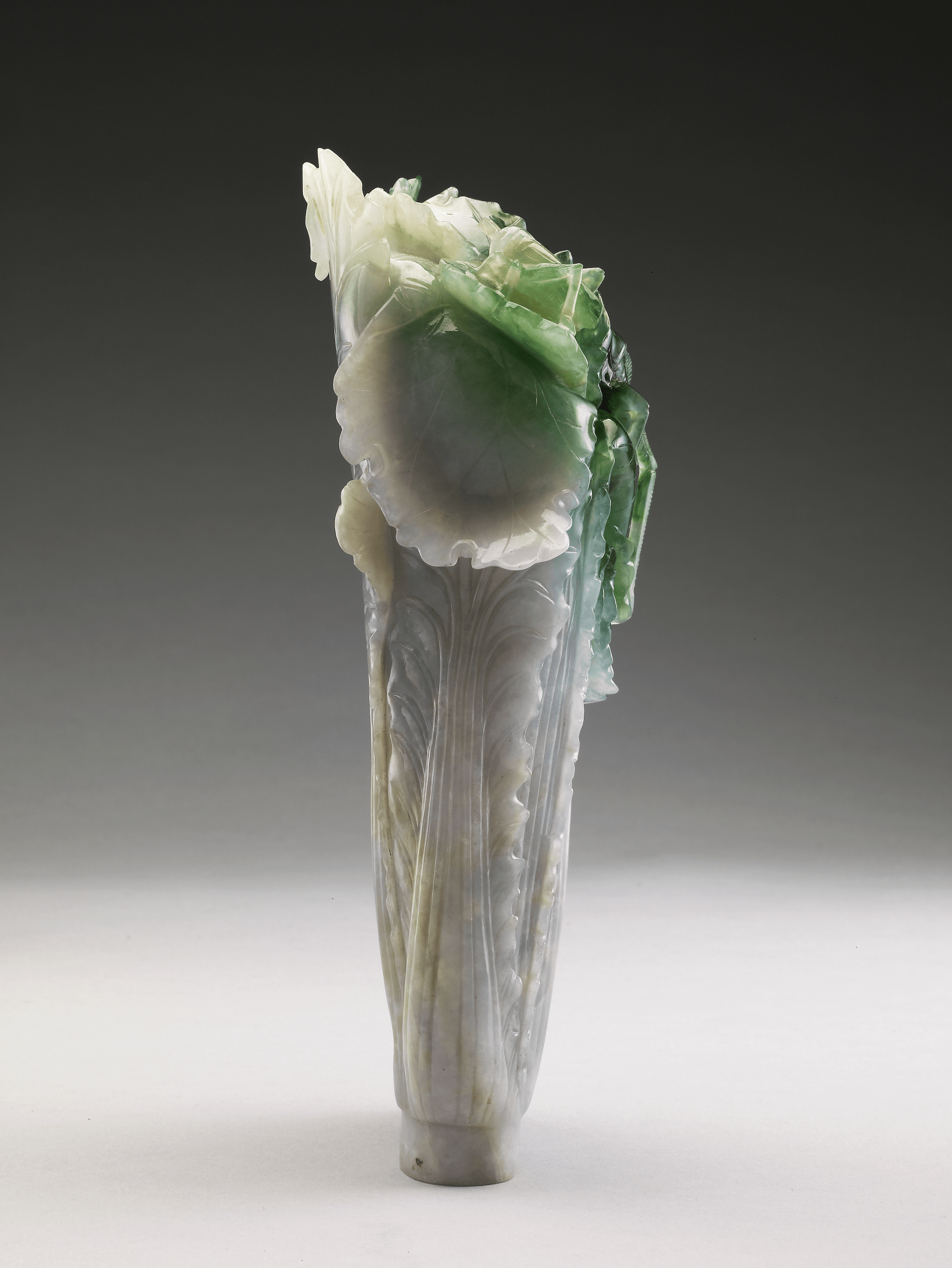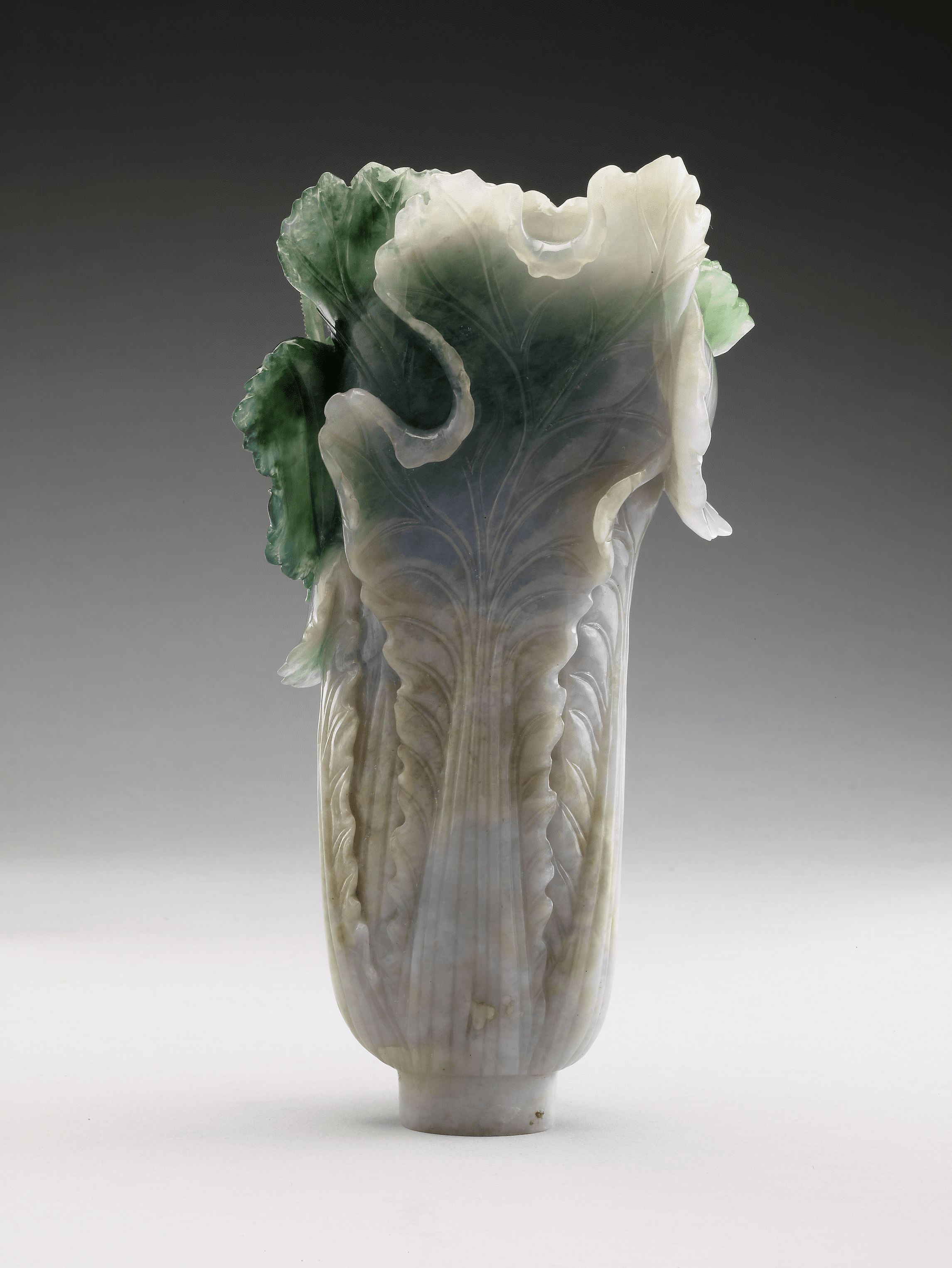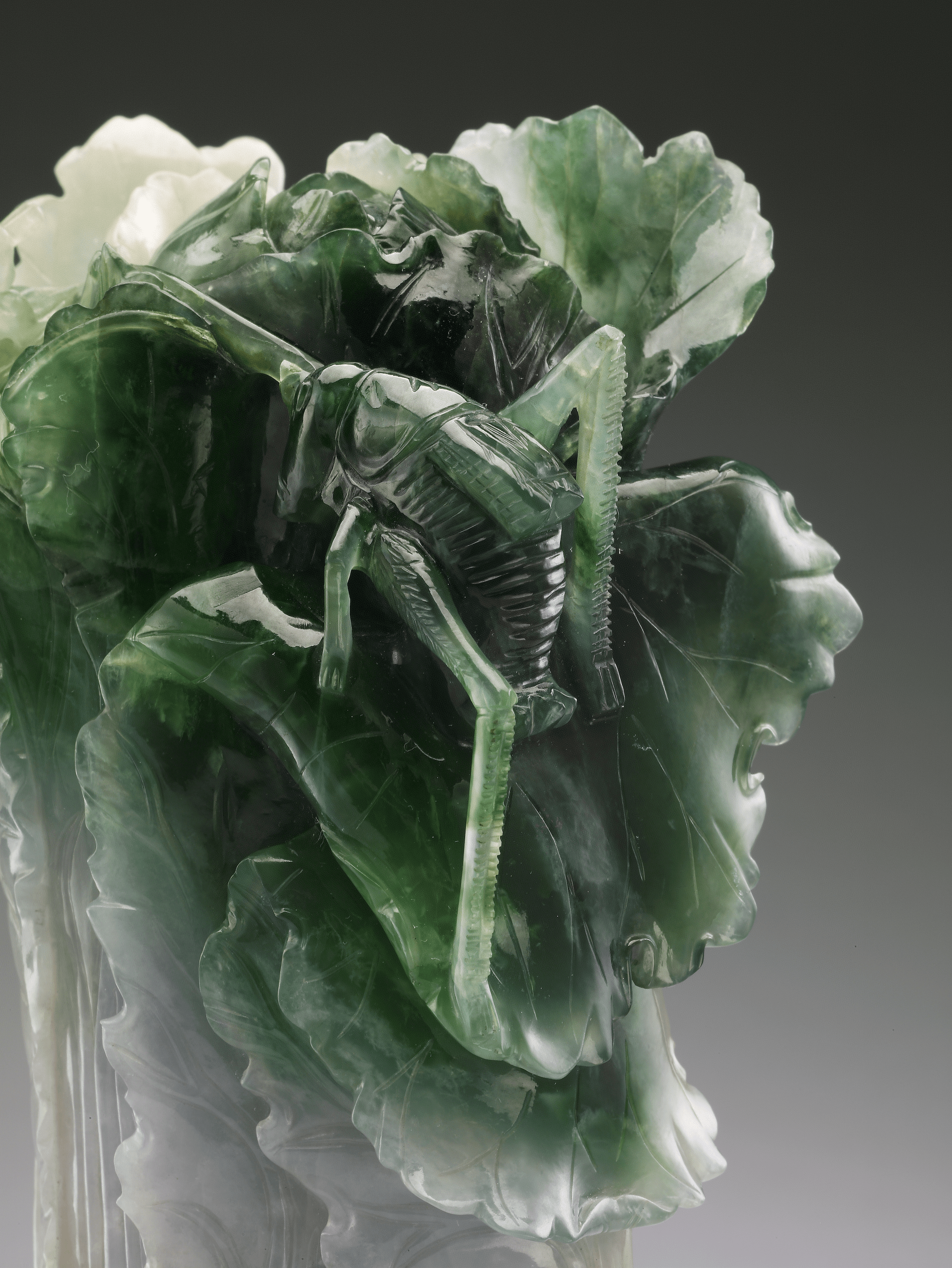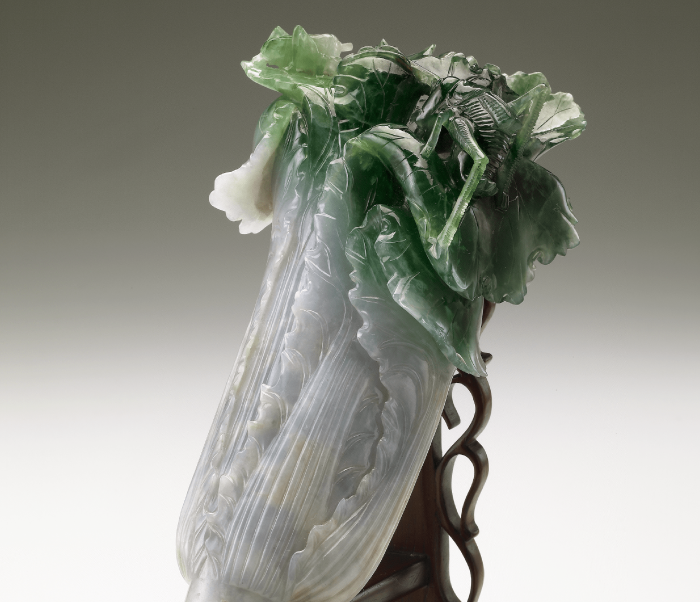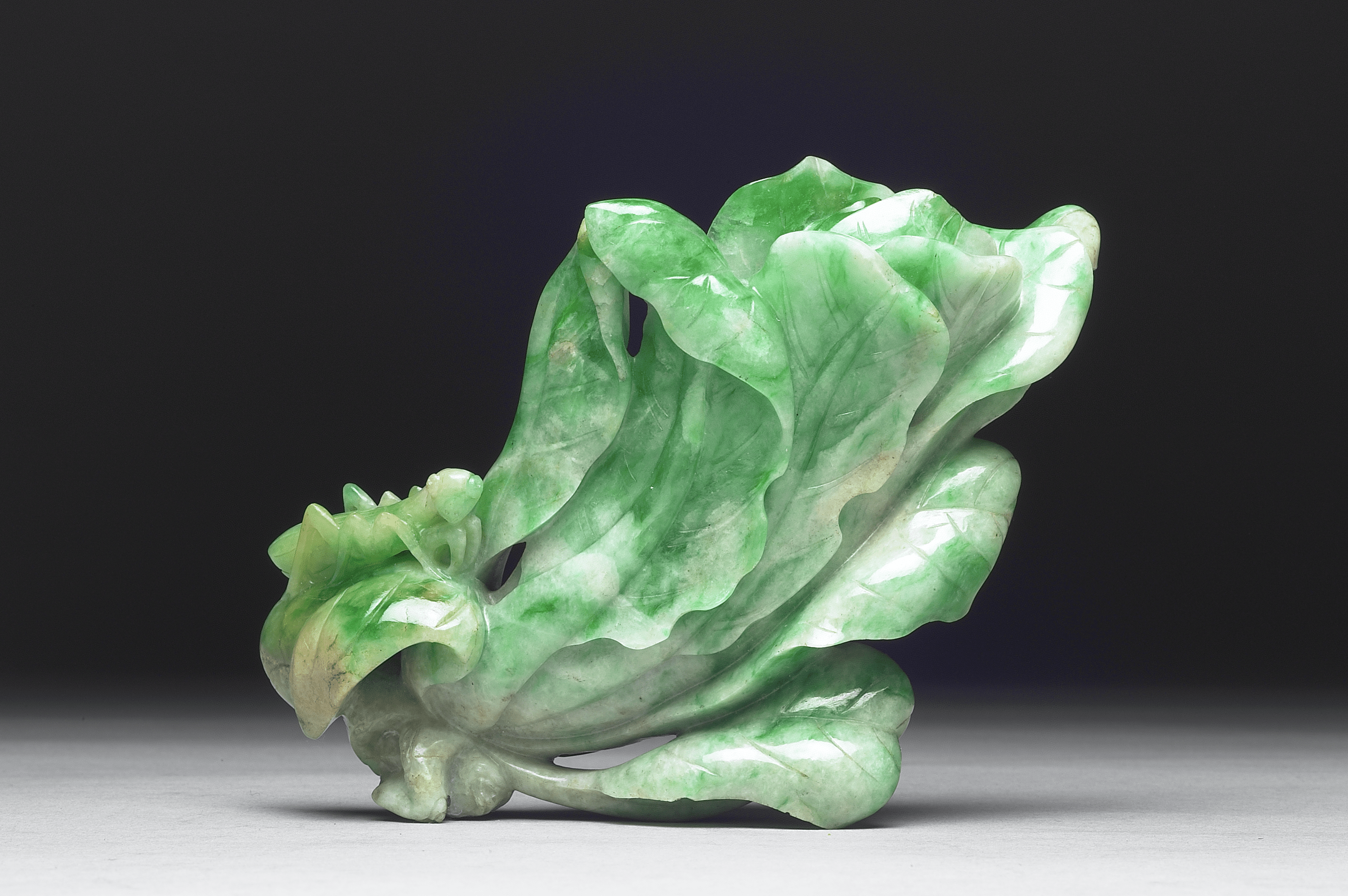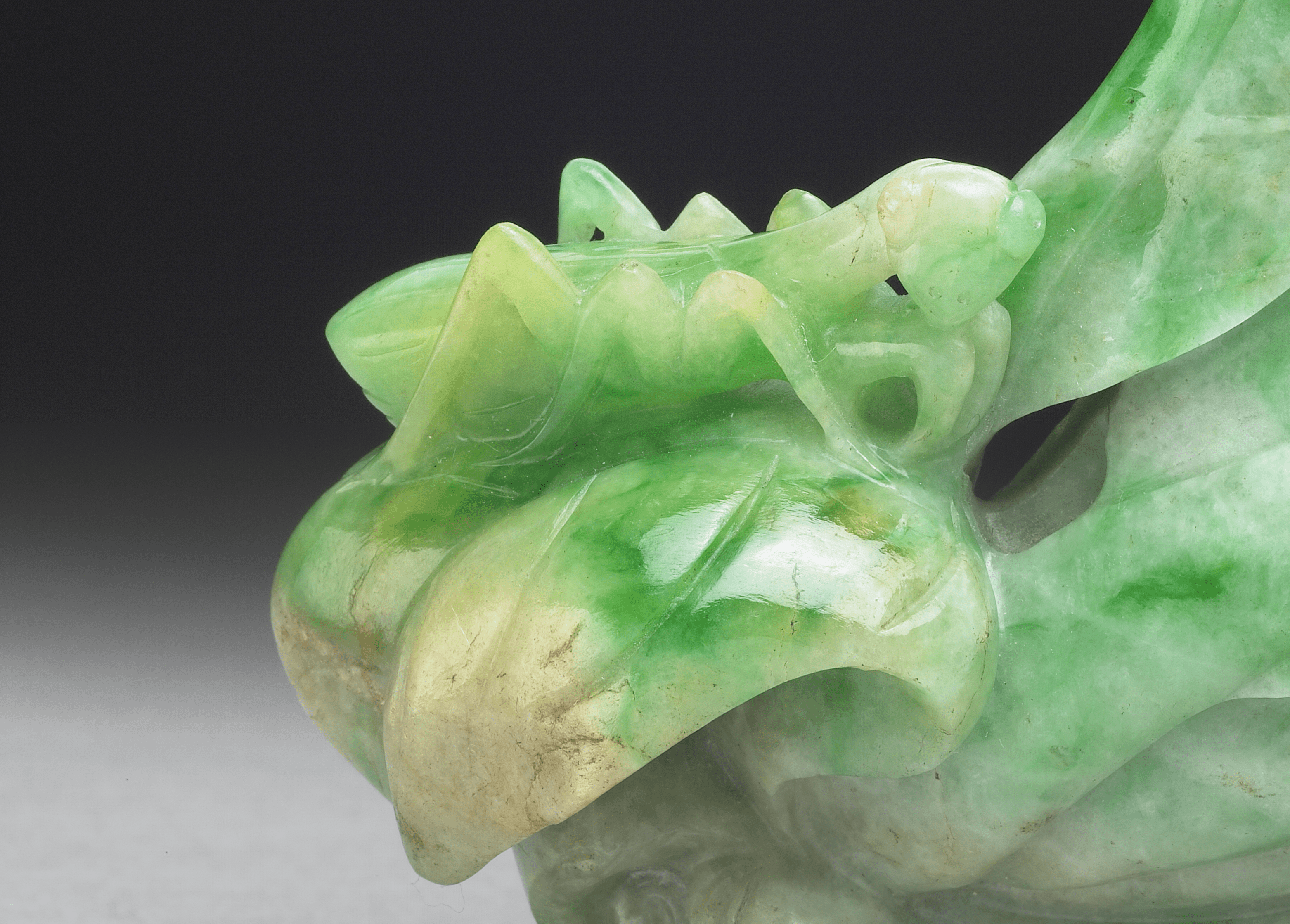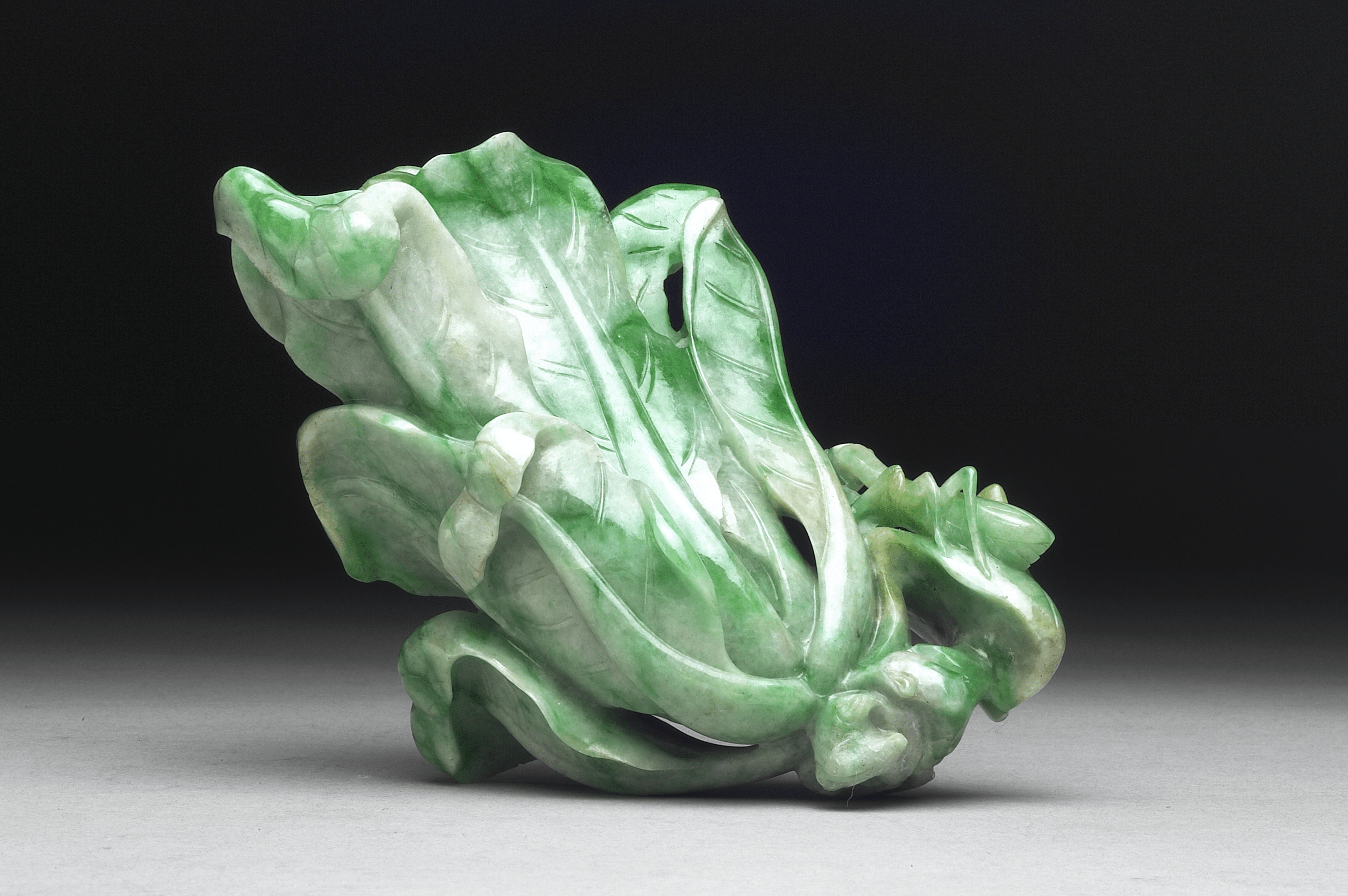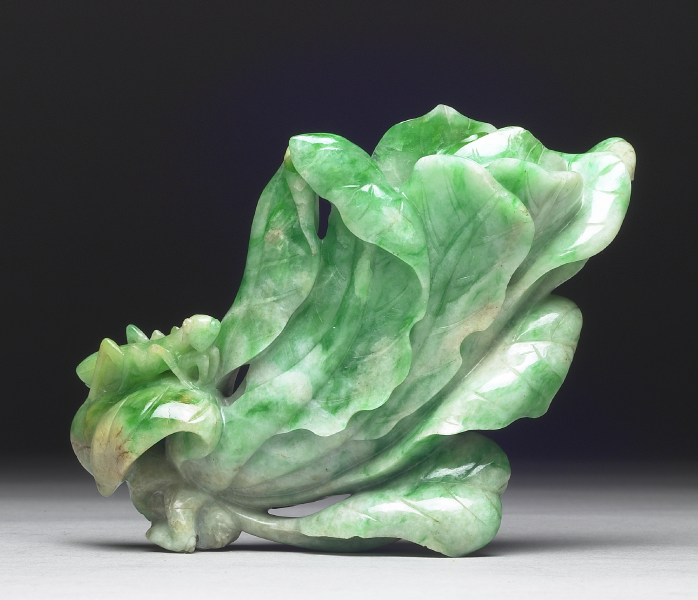NPM New Media Art Exhibition
-

Lingering Fragrance on the Horse Hooves after a Flowery Outing
"Lingering Fragrance on the Horse Hooves after a Flowery Outing" was originally one of the motifs used during the artist selection process in Huizong's Painting Academy in the Song Dynasty. It presents the metaphorical impression of flowers, horses and butterflies—poetic imageries prevalent in the Song Dynasty. This area uses animated projections to make the petals seem like they are floating in the air. At the same time, horses gallop amid the fragrant trail, while butterflies drawn to the perfumed flowers begin their dance.
Artifact Inspiration:
Playing the Zither under Pines
Tang Dai, Qing dynasty(1644-1911)
Manual of Birds
Qing dynasty(1644-1911)
(The animated floor-projections reflect the flowers in Taichung.)
-

Painting Animation: One Hundred Horses
"Painting Animation: One Hundred Horses" is inspired by the Qing court painter Giuseppe Castiglione's masterpiece "One Hundred Horses." The herd of horses from the painting is gorgeously rendered, especially in regards to the horses' poses and their activities, such as playfully wrestling, resting, galloping, and ford crossing. The storyline revolves around the groom officers taking care of the horses throughout a day of work, starting from morning activities at the break of dawn, to afternoon thundershowers, and finally to evening dusk, returning home under a starry night. Audiences can fully experience the changes around the clock and the beauty of nature as it shifts between sunshine and rain.
The installation uses the latest technology and several high-resolution projectors to seamlessly unfold the long-scroll painting on the wall, enabling viewers to experience and appreciate this unique form of art.
Artifact Inspiration:
One Hundred Horses
Lang Shining (Giuseppe Castiglione), Qing dynasty(1644-1911) -

The Emperor's Match: A Polo Interactive Installation
This interactive device is based on "Tang Emperor Minghuang Playing Polo." The painting depicts ancient polo sports, which were popular in the Tang Dynasty. The players ride on horses and hit the leather ball with a bat. The rules are similar to those of modern hockey. This work is based on the painting style of "Tang Emperor Minghuang Playing Polo" and combined with modern comic styles. The installation is a special production for this particular gallery, currently an arena for equestrian sports, and lets the audience experience the excitement and fun of an ancient polo match through haptic interaction.
Artifact Inspiration:
Tang Emperor Minghuang Playing Polo
Ding Guanpeng, Qing dynasty(1644-1911)
-
The Stable of Traveling through Time
Ancient painters used the brush, paper, and silk to depict life-like beasts, and were especially fond of painting the imposing manners of horses. Under the wave of cultural exchanges between China and the West beginning from the 16th century, the integration between the east and west in the arts and culture brought forth a new period in the history of art. In this section, the two works Pasturing Horses by Han Gan and Ten Steeds by Giuseppe Castiglione (Lang Shining) are shown. The former is a superb example of Chinese traditional painting techniques, while the latter reflects the innovative integration of Western painting techniques into Chinese painting.
Pasturing Horses
Han Gan, Tang dynasty(618-907)
This painting depicts a groom official riding a white horse as he leads a black, saddled steed by his side. In terms of form, it is typical in Tang Dynasty painting to idealize the features of the figures and horses. To accentuate the stout figures of the horses, the necks are exaggerated while the legs are long and slender. After the shape of the steed is outlined, it is rendered with layers of ink, thus presenting it with a robust and muscular bulk.
-
Ten Steeds ("Snow-Flake Eagle")
Lang Shining (Giuseppe Castiglione), Qing dynasty(1644-1911)
This piebald is a tribute horse presented to the Emperor Qianlong by Koruin Giynn Wang of Nomun Eehetu (in Sinkiang). It was named "Snow-Flake Eagle" after its rapid speed and snow white hair. There are Mandarin, Manchu and Mongolian texts on the painting from right to left indicating the length, height, and tribute state.
Giuseppe Castiglione (1688-1766), called Lang Shining in Chinese, was a native of Milan, Italy. At twenty-seven, he journeyed to China as a missionary and was summoned to the Imperial Court, where he served under the Kang-hsi, Yung-cheng and Chien-lung emperors. He used Western painting techniques of shadow and perspective to create realistic and vivid portrayals of horse, as well as the luster and texture of the horse's hair and body, accurately conveying everything from the muscles and tendons of its legs to even the blood vessels under its skin. -

Morphoses of Castiglione's Hundred Horses (2016)
Considered to be among the top ten masterpieces of Chinese painting, Guiseppe Castiglione's One Hundred Horses silk handscroll portrays about a hundred horses in a variety of coat colors and distinctive markings. This installation provides a digital animation of these equine coat textures, and projection maps them onto the surface of a white life-size horse sculpture, thereby creating the visual illusion of a morphoses across all the horses in Castglione's painting.
This area uses dark mirror walls to create the immersive effect of people and horses ambling through a sylvan setting, rendering the harmonious symbiosis between man, horses and nature.
Concept and design: Jeffrey Shaw
Animation and projection mapping: Adam Zeke
Production: City University of Hong Kong School of Creative Media
Original Work of Art: Guiseppe Castiglione's One Hundred Horses (1728) -
Jadeite Cabbage in Blossom
Inspired by the advanced agricultural development in Taiwan and to convey the harmonious co-existence between man and nature, the museum's most popular artifact "Jadeite Cabbage" and "Jadeite Chinese Cabbage" are brought to Taichung, representing the theme of agricultural products found in everyday life. The exhibition combines the ancient artifacts with the local culture and contemporary spirit, and brings art and culture closer to people.
Jadeite Cabbage
Qing dynasty (1644-1911)
- Length: 18.7cm, width: 9.1cm, thickness: 5.07cm
This piece is almost completely identical to a piece of bokchoy cabbage. Carved from verdant jadeite, the familiar subject, purity of the white vegetable body, and brilliant green of the leaves all create for an endearing and approachable work of art. Let's also not forget the two insects resting on the vegetable leaves! One is a locust and the other is a katydid, both of which are traditional metaphors for bearing numerous children. The shape and color of the cabbage presented in this piece of work shows the brilliant creativity and exquisite craftsmanship of Qing dynasty craftwork.
-
Jadeite Chinese Cabbage
Qing dynasty (1644-1911)
- Height: 13.4cm, length: 8.9cm, width: 8.9cm
This piece is carved in emerald green jade with white spots. The craftsman depicted the veins of the cabbage with inscribed lines, which vividly renders the soft texture of the leaves of the cabbage. At the stem of the cabbage rests a praying mantis, cleverly presenting the harmonious symbiosis of nature.
